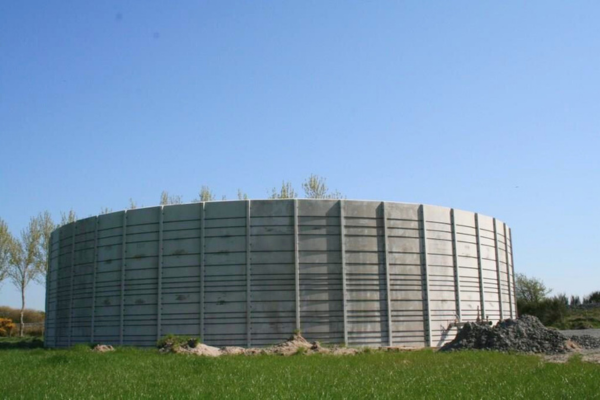Whats in that Tanker? – Accounting for the Use of Slurry on Silage Crops
15 May 2025First cut is well underway for some dairies, and imminent for others across Scotland at the time of writing (6th May). That being said, it won’t be long before the first inter-cut slurry applications go out. In between cuts is a particularly relevant time to fine-tune nutrient applications due to risks posed to silage quantity and quality if nutrients are under or over supplied. Over-supply of too much nitrate and/or too much potash, in particular, could potentially pose a risk to the nutritive quality of the conserved forage. This article will focus on how to account for the nutrients supplied by slurry applications in order to fine tune any additional fertiliser applications made.

The typical nutrient content of 1m3 of slurry at 6% DM (dry matter), as shown in table 1, is 2.6kg of N (nitrogen), 1.2kg of P2O5 (phosphate), 3.2kg of K2O (potash) and 0.7kg of SO3 (sulphur). This translates into 78kg nitrogen, 36kg of phosphate, 96kg of potash and 21kg of sulphur in a heavy slurry application rate of 30m3/ha (2700gallons/acre).
Table 1. Typical Nutrient Content of a 6% DM Slurry (kg/m3).
| Total N | Total P2O5 | Total K2O | Total SO3 | |
|---|---|---|---|---|
| Kg/m3 | 2.6 | 1.2 | 3.2 | 0.7 |
| Kg in 30m3 | 78 | 36 | 96 | 21 |
However, the percentage of the applied nutrients that can be utilised by the crop varies depending on soil conditions, soil type, application method and timing. Typically, 50% of the applied phosphate from slurry is taken up by the following crop. However, when planning your fertiliser applications, if the soil status is moderate or higher, then 100% of the quantity is factored in when planning your fertiliser application rate. Factors that influence the phosphate availability from applications include, the soil pH (phosphate availability is low in acidic soils below 5.5) and the phosphorus sorption capacity (PSC) class of your soil. To find out the PSC class of your soil, find your farm on the national soil map of Scotland interactive map.
On the other hand, it is estimated that 90% of the applied potash is available to the next crop in the year of application. When making silage no single application of nutrients should exceed 90kg/ha of potash as beyond this level ‘luxury uptake’ of potash can occur, which can be antagonistic to the uptake of magnesium by the plant. Whilst that is the maximum rate, typically applications for first cut would be in the region of 60-90kg/ha and applications for second cut typically 50-60kg/ha. As illustrated in table two below, a heavy application of slurry could exceed that rate of potash supply.
Sulphur is different again with an estimated availability of around 35% if applied in the spring. The percentage availability of the Nitrogen on a mineral soil where the slurry has been surface-applied would be estimated at 35% for spring/ summer applications.
Table 2. Typical slurry nutritive values to the silage crop based on a 30m3/ha 6% DM slurry, surface applied to a mineral soil in the summer.
| N | P2O5 | K2O | |
|---|---|---|---|
| Total nutrients in 30m3/ha slurry application. | 78kg | 36kg | 96kg |
| Percentage availability in spring application | 35% | 50-100% | 90% |
| Plant available Nutrients from 30m3/ha application | 27.3kg | 18-36kg | 86.4kg |
*Example based on specific conditions stated in caption. To find out the expected percentage utilisation for your farm based on your soil type, timing, application method and/or slurry analysis please seek further advice or consult technical note TN736 (link at end of article).
Whilst using the standard analysis figures in table 1 gives some indication of the amount of nutrients you are likely to apply in a slurry application, you could also go the extra mile and undertake analysis of your slurry. A lot of N, P and K is brought onto the farm in imported feed which is then recycled through to the slurry. Slurry analysis will vary depending on the diet of the cows and the amount of dilution it receives from rainwater. It is also a good idea to analyse your soils at a frequency between once every two and once every five years. Determining the nutrient statuses of your soils will help you target your slurry applications to the fields that will benefit from it most. If you identify high P and K statuses in some fields, that’s likely an indication that they have historically received too much slurry.
Freya Lance, SAC Consulting
Further Information
FAS technical note TN736 contains all the information you need to understand the nutrient value of your slurry applications and how to factor that into your nutrient budgeting decisions. There is also funding available towards the cost of specialist advice for slurry and nutrient management planning which you can find here.
Sign up to the FAS newsletter
Receive updates on news, events and publications from Scotland’s Farm Advisory Service

